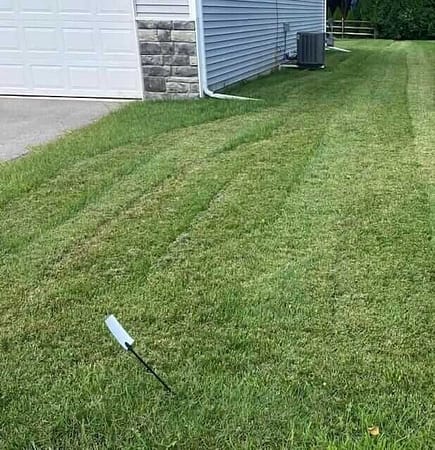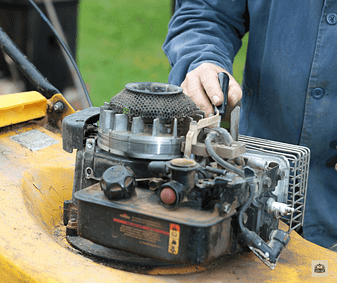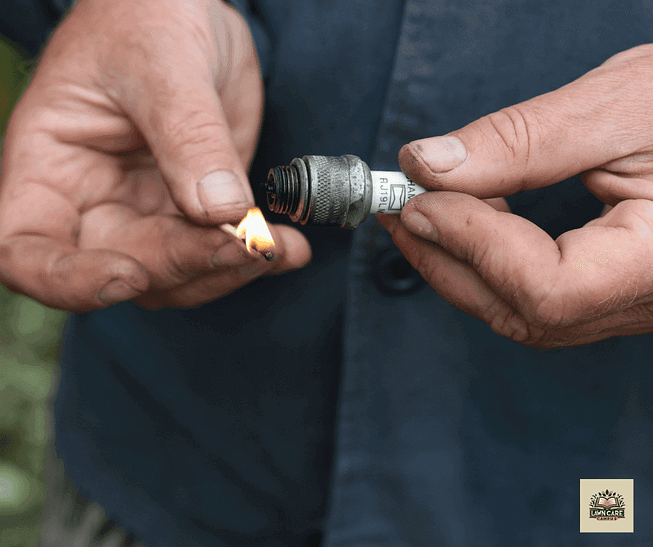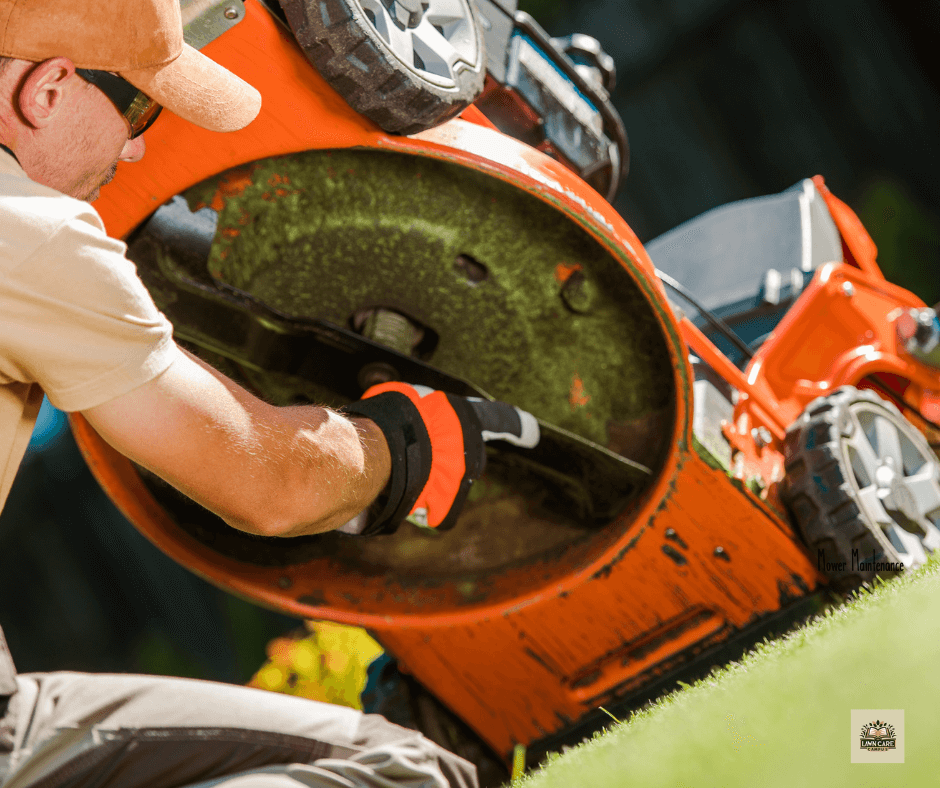Lawn Mower Tune-Up 101: Keep Your Machines Running Smoothly
Running a successful lawn care business requires not only skill but also meticulous maintenance of your equipment. Proper upkeep of lawn mowers is crucial for maximizing performance and extending their lifespan, ensuring your business remains efficient and profitable. This comprehensive guide details the essential maintenance practices and schedules that every lawn care professional should implement.
Introduction -Importance of Regular Lawn Mower Maintenance for Lawn Care Businesses
Frequent maintenance prevents breakdowns, enhances cutting efficiency, and prolongs the life of your mowers. Well-maintained equipment ensures a clean cut, which is vital for lawn health and client satisfaction. According to the Outdoor Power Equipment Institute, consistent care can extend mower lifespan by over 10 years.
Proper lawn mower maintenance not only improves the machine's performance but also saves time and money in the long run. By avoiding costly repairs and downtime, you can maintain a reliable service that keeps your clients happy and your business thriving.
When to Perform Lawn Mower Tune-Ups
Ideally, you should perform a comprehensive lawn mower tune-up at least monthly if you are a professional. The best times for this are in the spring before the mowing season starts, and at the end of the mowing season before storage. Of course this depends on where you live and the amount and size of lawns you are mowing. Regular checks during the mowing season are also recommended. Read the recommendations from the manufacturer.
Maintenance Schedules for Lawn Care Professionals
Given the frequent use in a business setting, lawn mowers require more diligent upkeep. Here's a suggested maintenance schedule:
Daily maintenance (40 small-mid size lawns as a base)
Blade sharpening: Sharpen blades daily to ensure a precise cut and reduce engine strain. Use a bench grinder or metal file, and balance the blades to prevent vibrations.
Deck cleaning: Remove grass clippings and debris to prevent rust and enhance cutting performance. Use a scraper or brush, and consider a hose for thorough cleaning.
Weekly Maintenance
Oil check: Inspect oil levels and quality; replace if necessary. Ensure you use high-quality engine oil suitable for your mower model.
Air filter inspection: Check for clogs and clean or replace the filter to maintain engine efficiency. A clean air filter ensures optimal air intake and smooth engine operation.
Monthly Maintenance
Belt and spark plug inspection: Examine for wear and replace if needed to prevent power transfer issues. Regularly checking these components prevents unexpected breakdowns.
Battery maintenance (for electric mowers): For electric mowers, ensure batteries are fully charged and store them correctly. Follow manufacturer guidelines to maximize battery lifespan.
Essential Tools and Supplies for Lawn Mower Tune-Up
Gather the following tools and supplies for a thorough tune-up:
- Socket wrench set
- Flathead and Phillips screwdrivers
- Replacement parts (spark plug, air filter, oil filter)
- Engine oil
- Blade sharpening tools
- Fuel stabilizer
- Cleaning brush and cloths
Step-by-Step Guide to Lawn Mower Tune-Up
Deck Cleaning
One of the most rewarding yet commonly neglected tasks in your lawn mower tune-up regimen is regular mower deck cleaning. Over time, grass clippings and debris can accumulate underneath the deck, drastically affecting your machine’s performance. According to a University of Nebraska study, a clogged mower deck can reduce cutting efficiency by up to 25%.
To clean it effectively, start by removing the spark plug to prevent accidental startups. Tilt the mower to access the deck and use a brush or a putty knife to scrape off the buildup. For a thorough clean, consider use a hose, power washer, or air compressor to wash away remaining debris; just ensure the mower is completely dry before reassembly.
One of the biggest differences in a commercial mower and a hommeowner mower is the deck. A commerical deck is thicker and able to withstand a lot more use. Check the deck for any dents that need to be fixed or other issues.
Regular cleaning not only enhances cutting efficiency but also prevents rust and extends the lifespan of your equipment. By integrating this simple step into your lawn mower maintenance schedule, you can significantly optimize your machine's efficiency and ensure that it continues to run smoothly for years to come.
Oil Change
Drain the old oil and replace it with fresh engine oil to ensure smooth operation. An oil change should be done at least quarterly. Check the owners manual for suggested oil weight and type.
Mower Belt
A critical yet frequently overlooked component in your lawn mower maintenance routine is the inspection and replacement of the mower belt. The mower belt is essential for transferring power from the engine to the blades, enabling efficient cutting. According to a report by the Outdoor Power Equipment Institute, 15% of mower performance issues can be attributed to worn-out or damaged belts.
Periodically inspect the belt for signs of wear, such as cracks, fraying, or slack. Replacing a deteriorating belt with a high-quality, durable one can improve cutting efficiency by up to 25%, as suggested by industry studies. Taking the time to check and replace the mower belt as necessary will not only enhance your mower's performance but also extend its overall lifespan, thereby saving you from costly repairs down the line.
Incorporating mower belt inspection into your regular lawn mower care routine is a simple yet effective way to maintain optimal performance and ensure a clean, even cut for your lawn.
Mower Spark Plug Replacement
Replace the spark plug annually to ensure reliable ignition. A faulty spark plug can make starting the mower difficult and affect performance.
One crucial, yet frequently underestimated aspect of your lawn mower tune-up routine is the spark plug replacement. The spark plug is vital for igniting the fuel-air mixture in the engine and a faulty plug can severely hamper your mower's performance. According to industry experts, worn-out spark plugs are responsible for up to 70% of lawn mower startup issues (source: Extension Service).
To replace the spark plug, first, remove the old one carefully using a socket wrench. Check the gap on the new spark plug to ensure it's set to the manufacturer’s specifications, usually around 0.03 inches. Install the new spark plug, ensuring it is snug but not overly tightened. This simple yet effective step can significantly improve engine efficiency, fuel combustion, and overall mower performance.
By making spark plug replacement a staple in your seasonal lawn mower tune-up routine, you not only mitigate startup issues but also ensure your machine runs more smoothly and efficiently throughout the mowing season.
Air Filter Replacement
One essential yet often underrated step in your lawn mower tune-up routine is air filter replacement. The air filter plays a crucial role in ensuring that engine receives clean air, which is vital for optimal combustion and efficiency. Studies show that a clogged air filter can reduce engine performance by up to 14% (source: Engineering Toolbox).
To replace the air filter, first, locate the filter housing and open it, remove the old filter. Swap it out with a new one, ensuring it fits securely in place. This simple yet critical step helps prevent dust and debris from entering the engine, thereby improving fuel efficiency and reducing wear and tear.
By making air filter replacement a part of your regular lawn mower care routine, you not only enhance your mower's performance but also extend its lifespan, ensuring your machine runs smoothly season after season.
Fuel System
A significant yet often neglected aspect of lawn mower tune-up is checking and maintaining the fuel system. Clean fuel is critical to the and optimal performance of your mower. Studies indicate that contaminated or stale fuel is the culprit behind 80% of all lawn mower starting problems (source: Small Engine Maintenance Association).
To maintain your fuel system, start by using a fuel stabilizer to keep the fuel fresh and prevent the accumulation of varnish and gum in the system. Regularly inspect the fuel filter and replace it if you notice any debris or clogging. Additionally, clean the fuel tank and lines to ensure that no contaminants interfere with fuel flow. For mowers used sporadically, it is recommended to drain the fuel at the end of the season to prevent degradation.
By incorporating these steps into your lawn mower maintenance routine, you can significantly enhance fuel efficiency and performance, ultimately extending the lifespan of your machine. Remember, a clean fuel system is essential for a smooth-running mower, and it’s a simple addition that yields substantial benefits in the long run. Use a fuel stabilizer and clean the fuel system to prevent clogs. Drain the fuel or add stabilizer before storing the mower for the offseason.
Clean the carburetor to remove any debris and ensure efficient fuel mixing. A clean carburetor improves performance and fuel efficiency.

Uneven blades
Sharpening Mower Blades
One often underestimated component of a successful lawn mower tune-up is the meticulous sharpening of mower blades. Dull blades not only tear grass, leading to unsightly lawns and increased susceptibility to diseases, but they also put strain on the mower's engine. According to a report from Turfgrass Institute, regularly sharpening mower blades can improve cutting efficiency by up to 40%. To sharpen the blades, detach them from the mower using a wrench.
Secure the blade in a vice, and use a metal file or a bench grinder to restore its sharp edge, following the existing angle. Balancing the blade afterward is critical to prevent vibration and uneven cuts. Reinstall the blade securely before using the mower. By integrating blade sharpening into your routine lawn mower care, you ensure not only a clean and healthy lawn but also less wear and tear on your mower's engine, ultimately enhancing its performance and lifespan.
Tire Maintenance
One aspect that often goes unnoticed in lawn mower tune-up routines is the vital role of proper lawn mower tire maintenance. Ensuring your mower's tires are correctly inflated and in good can drastically impact its performance and maneuverability.
According to a report by the Tire and Rubber Association, lawn mowers with poorly maintained tires can experience efficiency losses of up to 10%. To keep your tires in top shape, regularly check the tire pressure and fill them to the manufacturer’s recommended levels.
Inspect the tires for any signs of wear, cuts, or punctures, and replace them if necessary. Well-maintained tires not only improve traction and ensure an even cut but also reduce the strain on the mower's engine and transmission. By integrating tire maintenance into your lawn mower care routine, you contribute significantly to the overall efficiency and longevity of your machine, making your lawn care quicker and more efficient.
Mower Belt
When it comes to giving your lawn mower a comprehensive tune-up, one key component that gets overlooked is checking and replacing the mower belts. The mower belt plays a vital role in transferring power from the engine to the blades, enabling efficient cutting. Industry data, including findings from the Outdoor Power Equipment Institute, highlights that worn-out belts can lead to a performance reduction of up to 15%.
To ensure optimal performance, inspect the belt regularly for signs of wear, such as cracks or fraying. If the belt shows any damage, it's time for a replacement. Using a high-quality belt not only improves the cutting efficiency but also prolongs the overall lifespan of your lawn mower. Moreover, a well-maintained belt ensures smoother operation, making your mowing sessions quicker and less labor-intensive.
As part of your periodic lawn mower maintenance, make belt inspection and replacement a priority to avoid unexpected downtime and costly repairs. By adhering to this crucial step, you'll keep your mower running smoothly, ensuring your lawn always looks its best.
Electric Mowers
Maintaining an electric lawn mower involves several key steps to ensure optimal performance and longevity. First, regularly check and clean the mower's deck to prevent grass build-up, which can hinder cutting efficiency. Inspect the blades frequently, sharpening or replacing them as needed to maintain a clean cut.
It's also important to examine the power cord for any signs of wear or damage if your mower is corded. For battery-powered mowers, ensure the battery is charged according to the manufacturer's guidelines and store it in a cool, dry place when not in use. Lastly, wipe down the exterior to keep it free from debris and dirt, ensuring that vents are clear to prevent overheating.

Troubleshooting Common Lawn Mower Issues
Understanding and addressing common lawn mower problems can save you time and money while ensuring your machine stays in peak condition. For instance, if your mower is having startup issues, check the spark plug and fuel system first. According to a report by Extension, over 70% of startup problems are related to these components.
Uneven cutting could be due to a dull blade or improperly balanced mower deck.
Verify that the blades are sharp and balanced for a clean cut. Unusual noises might indicate loose parts or a clogged air filter, which can be resolved through regular inspection and maintenance.
By creating a checklist and routinely going through it, you can identify and fix minor issues before they become major problems, enhancing your lawn mower's efficiency and extending its lifespan.
Address common problems such as startup issues, uneven cutting, or unusual noises. Regular inspections and preventive care can help identify and fix these issues early.
When it comes to achieving optimal lawn mower performance, one of the most overlooked steps is ensuring proper carburetor cleaning. A clean carburetor is essential for efficient fuel-mixing and overall engine performance. According to a study published in the Journal of Research, routine carburetor cleaning can improve fuel efficiency by up to 15 To clean the carburetor, remove it from the engine and disassemble its components.
Use a carburetor cleaner spray to remove all built-up grime and debris, ensuring the fuel pathways are clear. Reassemble the parts carefully and reinstall the carburetor. This not only ensures effective fuel combustion but also reduces the risk of engine stalling and poor startup performance. By incorporating carburetor cleaning into your regular lawn mower tune-up routine, you will be investing in the longevity and efficiency of your machine.
In addition to basic tune-up steps, one crucial yet often neglected task is replacing the mower belt. A worn-out belt can severely affect the mower's efficiency, leading to poor cutting performance. According to a study by the Small Engine and Repair Journal, replacing the belt as per the manufacturer's recommendation can increase the mower's efficiency by up to 20%.
A quick check for cracks or signs of wear can help you identify when it's time for a replacement. Investing in a durable, high-quality belt ensures smoother operation and prolongs the life of your machine. Remember, a well-maintained belt contributes significantly to overall mower performance, ensuring your lawn looks its best.
One often overlooked yet critical aspect of lawn mower tune-up is ensuring proper lubrication of all moving parts. According to experts from the University of Missouri Extension, regularly lubricating your mower’s wheels, axle, and other moving components can reduce friction and wear, significantly enhancing its longevity.
Additionally, investing in a high-quality lubricant can make a big difference. Superior-grade lubricants not only perform better under high stress but also tend to last longer, making them more cost-effective in the long run. As the saying goes, "A well-oiled machine runs smoothly," and nothing could be more true for your lawn mower. Incorporating this simple step into your lawn mower maintenance routine can lead to fewer repairs and a much more efficient machine overall.
Lawn Mower Deck Cleaning and Maintenance
Cleaning and maintaining the lawn mower deck is fundamental for both the performance of your mower and the health of your lawn. Over time, grass clippings, dirt, and debris can accumulate under the deck, causing rust and reducing cutting efficiency.
According to a study published by the University of Minnesota Extension a dirty deck can lead to decreased mower performance by up to 30%. To clean the deck, first, disconnect the spark plug for safety. Use a scraper or brush to remove built-up grass and debris.
For a deeper clean, consider using a garden hose to rinse off any remaining dirt. Regular deck cleaning not only ensures a consistent and clean cut but also prolongs the life of your mower by preventing corrosion and other damage.
"A clean deck is a happy deck," as the saying goes, and keeping this in mind can save you countless hours of frustration and repair costs.

Extending the Lifespan of Your Lawn Mower
Maintaining your lawn mower isn't just about keeping it operational for the season—it's about extending its lifespan and ensuring it performs optimally for years to come.
According to a study by the American of Landscape Architects, machines that receive regular preventive care can last up to 40% longer than those that do not. To further extend its lifespan, follow a dedicated mower maintenance schedule. Regular inspection of parts, including mower blades, spark plugs, and belts, can help you identify wear and tear before they become serious issues.
Additionally, always store your mower in a dry, sheltered location during the off-season to prevent rust and corrosion. Utilizing a protective cover can also safeguard against dust and moisture. By dedicating time to seasonal tune-ups and adhering to a consistent maintenance checklist, you can ensure your mower remains in peak condition, offering reliable performance year after year.
As the old adage goes, "An ounce of prevention is worth a pound of cure," and nowhere is this more applicable than in the realm of lawn mower upkeep.
Conclusion
Regular lawn mower maintenance is essential for any lawn care business owner looking to provide top-notch service and maintain a competitive edge. By implementing a rigorous maintenance schedule, including daily blade sharpening and deck cleaning, weekly oil and air filter checks, and monthly inspections of belts, spark plugs, and batteries, you can ensure your mowers are always in peak condition.
Diligent care not only extends the life of your equipment but also improves its performance, resulting in a better cut and healthier lawns for your clients. Well-maintained mowers are more reliable, efficient, and less likely to break down, saving you time and money in the long run.
By prioritizing lawn mower maintenance, you demonstrate your commitment to quality and professionalism, setting your business apart from the competition and fostering long-lasting client relationships.
In conclusion, investing in a comprehensive lawn mower maintenance routine is a must for any serious lawn care business owner. By following the guidelines outlined in this article, you can maximize the performance and longevity of your equipment, provide exceptional service to your clients, and ultimately, grow a thriving, profitable business in the competitive landscaping industry.


